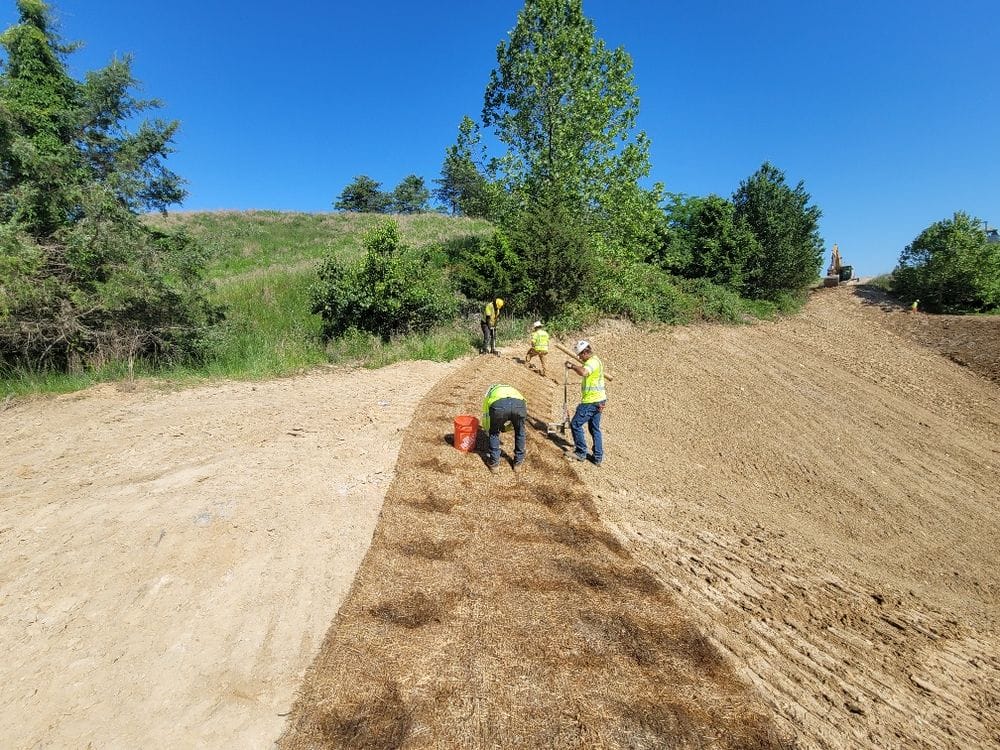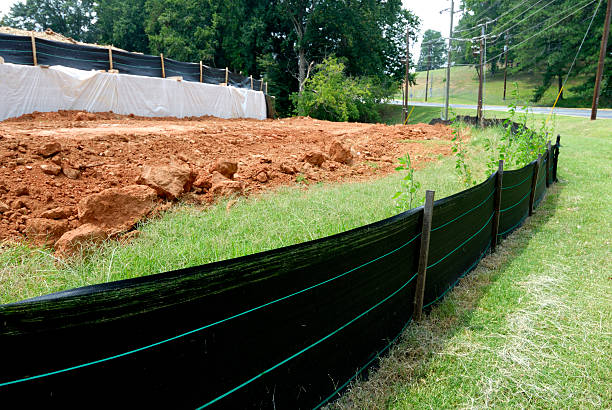Effective Approaches by Memphis Erosion Control Solutions erosion control
Ideal Practices for Disintegration Control in Building And Construction Projects
Are you working on a building and construction job and worried about disintegration control? In this short article, we will certainly guide you through the ideal practices for stopping erosion on your site. Memphis Erosion Control Solutions silt fences. Get prepared to tackle disintegration head-on and ensure the success of your construction project.
5 Essential Erosion Control Techniques

To efficiently manage disintegration on your construction website, you'll need to apply essential strategies such as slope stabilization and debris control measures. Incline stabilization is important in stopping dirt disintegration on steep slopes. You can accomplish this by using techniques like terracing, which includes developing straight steps on the incline to reduce water circulation and advertise the absorption of rainwater. An additional efficient technique is using erosion control coverings or floor coverings, which are positioned on the incline and help retain dirt particles while permitting greenery to expand. Sediment control actions are likewise crucial to avoid debris runoff right into neighboring water bodies. One effective approach is the installment of silt fences along the border of the building website. These fencings work as obstacles, recording sediment-laden water and allowing it to work out before it gets to the water bodies. Additionally, you can use sediment containers, which are momentary retention fish ponds made to catch debris and permit water to gradually drain off. Carrying out these necessary disintegration control strategies will help decrease the negative ecological impact of your building and construction job and make sure compliance with guidelines.
Efficient Sediment and Runoff Administration

You can effectively handle sediment and drainage in your building job by implementing proper disintegration control actions. Sediment and drainage monitoring is critical to avoid erosion and secure the surrounding atmosphere. One reliable procedure is the installation of silt fencings along the perimeter of the construction site. These fences help to include debris and prevent it from going into close-by water bodies. An additional crucial practice is the application of disintegration control coverings or floor coverings. These blankets provide a protective layer on bare soil, lowering the impact of rainfall and protecting against erosion. Furthermore, using sediment basins or sediment traps can aid to record sediment and stop it from entering stormwater systems. Normal maintenance of these actions is necessary to guarantee their performance throughout the construction job. This includes cleansing and examining sediment basins and regularly changing silt fences and disintegration control blankets as needed. By implementing these erosion control actions, you can successfully manage sediment and drainage in your construction project, lessening the influence on the environment and following regulatory needs.
Key Considerations for Incline Stabilization
When thinking about slope stabilization, it is necessary to examine the terrain and recognize potential locations of instability. You require to thoroughly examine the incline's features, such as its structure, water drainage, and angle patterns. Try to find indicators of disintegration, such as subjected roots, splits, or down dirt. These indications can give you an idea of where stabilization procedures may be needed.
An additional choice is to grow greenery on the slope, as the origins can help secure the soil and control erosion. In addition, setting up disintegration control coverings or floor coverings can supply immediate security while greenery ends up being recognized.
It's vital to consistently check the supported slopes to ensure their effectiveness. Watch out for any indicators of movement or erosion, and take immediate action if essential. Routine upkeep, such as checking and fixing any kind of broken procedures, is additionally necessary to guarantee long-lasting stability.
Best Practices for Plant Life and Dirt Security
If necessary,One effective means to secure vegetation and dirt on slopes is by frequently inspecting for indications of disintegration and taking immediate action. By being aggressive and observant, you can protect against additional damage and guarantee the security of the slope. Start by evaluating the incline for any indicators of disintegration, such as revealed roots, bare soil patches, or debris buildup near the bottom. It is important to attend to the problem quickly if you observe any of these indications. Implement disintegration control measures such as mounting erosion control blankets, mulching, or perhaps creating retaining wall surfaces if required. Furthermore, growing vegetation can dramatically aid in stabilizing the dirt. Choose native plants that have check out here deep root systems, as they are more reliable in preventing disintegration. See to it to consistently evaluate the health of the vegetation and supply required maintenance, like watering and feeding. Keep in mind, disintegration can promptly get worse and cause severe damages, so it's necessary to address it immediately. By taking positive measures and on a regular basis monitoring the slope, you can secure the plant life and soil, guaranteeing the lasting security of the location. try this out
Carrying Out Appropriate Drainage Solutions
When it comes to handling water flow and protecting against erosion, understanding these aspects is necessary. Steeper inclines can lead to faster water flow, increasing the threat of erosion and flooding. On the other hand, gentler inclines enable water to move a lot more slowly, lowering erosion capacity.
Dirt type likewise influences water drainage system style. Different soil kinds have differing levels of permeability, affecting how water is taken in and drained pipes. As an example, sandy soils tend to drain faster because of their rugged structure, while clay soils have a slower drain rate as a result of their small nature. Recognizing the dirt type aids in choosing suitable water drainage techniques, such as making use of absorptive materials or mounting French drains. Additionally, considering the soil attributes assists prevent waterlogging, which can lead to poor plant development and damage to frameworks.
Final Thought
Finally, when it pertains to erosion control in building jobs, you need to comply with these ideal practices. Apply efficient sediment and drainage monitoring techniques to stop air pollution. Take into consideration slope stablizing approaches to guarantee the stability of the site. Protect plant life and soil by utilizing suitable steps. Finally, develop proper water drainage systems to manage water flow. By complying with these hop over to these guys essential practices, you can efficiently control erosion and ensure the success of your building and construction project.
To successfully regulate erosion on your building and construction site, you'll need to implement crucial methods such as incline stablizing and sediment control procedures. Slope stabilization is vital in preventing soil disintegration on high inclines. Another reliable strategy is the use of erosion control coverings or mats, which are put on the slope and help retain dirt particles while permitting plants to grow. An additional choice is to plant vegetation on the slope, as the origins can help secure the soil and control disintegration. Implement erosion control steps such as installing disintegration control coverings, mulching, or also building preserving walls if needed.